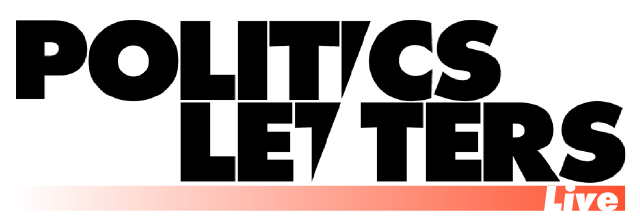Humanities scholarship, for most of its practitioners, is a labor of love. The credentialing process is time-consuming, expensive, and often under-respected; the professional opportunities, worse than scarce, are ubiquitously precarious and substandard. To pursue a career in the academic humanities is often to put “the work” above all else. Even if scholars do not always love the works they study, therefore, we almost always love the work of studying them. It’s one of the few reasons to stick around.
Little surprise, then, that scholars’ very love of our work is consistently used against us. Prestigious universities insist that the people teaching their classes are not workers because they are learning on the job; scholarly and public-facing publishing outlets alike seldom pay their content-producers—and often don’t pay their staff either. As Sarah Jaffe shows in her new Work Won’t Love You Back: How Devotion to Our Jobs Keeps Us Exploited, Exhausted, and Alone, the very concept of loving one’s work is a pervasive accessory to exploitation; in the academic context, workers’ love of teaching, writing, and research is in itself treated as proof that our “labor is not really labor, but a privilege” (249). What’s more, David Graeber has speculated that the very fact that a job can be rewarding creates broader cultural resentment within a society built on so many unrewarding jobs—“You get to have real jobs,” like teaching, the logic goes—“And on top of that, you have the nerve to also expect middle-class pensions and health care?”
It is in this context that we should consider Rita Felski’s allegation in her recent Hooked: Art and Attachment that literary scholars have clung to a “dichotomy of the clueless versus the critical, those who are stuck to their love objects versus those who have pried themselves free” (5). Matthew Rubery, reviewing Felski’s book for Public Books, translates her assessment into a call for scholars to “fess up to the feelings they have for what they study, interpret, and even—dare I say it—love.” But if critics continue to rely on what Felski calls “a rhetoric of skepticism” (40), it is not necessarily because we are closeted booklovers performing authority within disciplinary norms, nor because we are roving killjoys seeking to obliterate attachment qua attachment. On the contrary—if twenty-first-century literary scholarship can seem antagonistic towards readerly love, it may be in part because scholars are so often struggling to demystify literature’s role in our own lives.
Felski criticizes scholars for analyzing fandoms and readerships as “other” sociological phenomena, and thereby condescending to lovers of art by implicitly or explicitly excluding ourselves from their ranks. She calls for scholars to take our own “attachments” to art as both subject and grounding of our inquiry, a strategy she takes for granted would take anti-suspicious, reparative, appreciative forms. In fact, a great deal of recent literary scholarship has taken up the question of scholars’ aesthetic attachments with verve. But Felski tacitly excludes most of this scholarship, because it has so often undercut one of her basic premises. It has found that scholars’ aesthetic attachments are a problem.
Take for instance recent work in my own field, Nineteenth Century Studies. In their influential 2020 collaboration “Undisciplining Victorian Studies,” Ronjaunee Chatterjee, Alicia Mireles Christoff, and Amy R. Wong pointed to the tenacious imperialist and racist logics behind the affective construction of much scholarship on nineteenth-century literature, arguing that Victorian studies “replicates much of the colonialist narrowness of the ‘Victorian’ and […] gathers its identity from an Anglophilia alternately disavowed or embraced in a love of Victoriana.” In Worlds Enough, Elaine Freedgood shows that the work of the so-called realist novel in upholding racist hegemony inheres not only in the texts’ own ideological functions, but also in the particular enthusiasms of the much later literary critics who constructed their place in the canon. And in his bracing “Hating Victorian Studies Properly,” Nasser Mufti places the failure of white scholars to recognize the inextricability of race from Victorian literature in a direct genealogy from the British imperial strategy of constructing literary culture over and against a racialized other who could be “civilized” through the act of loving it.
For these thinkers, scholarly “love” is often an analytical and professional danger—a way to naturalize critical and pedagogical choices as matters of personal preference rather than as culturally significant decisions with political and material consequences. Such arguments have little in common with the social snobbery Rubery focuses on in his claim that “one of the first lessons you learn in grad school is to hide your personal taste or risk being shamed for liking the wrong kinds of things.” Yet they actually share Felski’s commitment to bringing scholars’ affective attachments into the daylight, rejecting the fantasy of evidence-sifting without value judgment. If we take the question of attachment as a matter of mere “method,” we risk losing track of its immediate, substantive implications. To think of attachment as a topos of “postcritique” rather than a critical practice of its own to be understood and, yes, interpreted, is to exempt ourselves as critics from our socio-political contexts in the very way Felski criticizes. In fact, Felski’s insight that “critique” is actually “built upon attachment” (127) is not the “gotcha” she treats it as: when, for example, Mufti calls for critics to learn to “hate [Victorian culture] properly” (401), the inescapability of attachment is very much to his point. Where Felski finds denial about critical attachments, I see scholars taking their own attachments more seriously than ever—often as objects of critique.
Hooked presents itself as correcting an imbalance: Felski acknowledges that some attachments can be harmful but alleges that criticism has largely ignored the many cases in which they are not. Thus, the book is rife with recommendations to do things like develop “critical languages […] more attuned to their objects” (135). Such a call would be difficult (and pointless) to argue against, but it punts on the very questions of value that Felski claims to be recentering. For a book to focus on the positive possibilities of attachment is fair enough, but Hooked provides no basis on which to determine which attachments are “good.” To which objects should critical languages be attuned? What are the consequences of different modes of “attunement,” and what risks do they carry? For Felski, attachment is always anterior to analysis: first we feel something about an artwork, and then we think until we can uncover why. “Acts of critique and demystification,” on the other hand, “pulveriz[e first-person experience] into irrelevance” (46) by rendering artworks a smokescreen for nefarious ideology rather than things experienced in and for themselves.
Yet the great “affordance” of demystification is not to annihilate first-person experience, but rather to clarify it. Felski does not distinguish between the demystification of an artwork and the demystification of one’s own attachment to it. And uncoincidentally, Hooked provides only a minimal and misleading account of the relationship between critical attachment and professional precarity. Questions of whether and how critical attachments affect individual and collective behavior of academic workers—in terms of labor organizing, pedagogy, advising, career choice, research programs—go unasked. Instead, when the crisis in the humanities is acknowledged at all, it is treated as a problem of salesmanship. Felski fantasizes that at a time when “funding for the humanities and public arts is being slashed,” her proposed modes of reading can help us answer the questions, “Why are music and literature and novels and paintings worth bothering with? Why should anyone care?” (40).
Felski is calling for a new defense of the humanities. But by framing disciplines as victims of the methodological obsessions of a Pharisaic scholarly class, rather than of a conscious, political effort to defund and discredit humanistic research, Hooked reproduces a standard, artificial market logic. In reality, the funding-slashers are not open to persuasion. Right-wing polemicists from Allan Bloom to Donald Trump’s “1776 Commission” have continually declared the death of the humanities a suicide, attributing declining enrollments to a student backlash against multiculturalism, canon critique, or political reading. The bad faith of this narrative is obvious enough—it is mostly used by those working to pull support from the Humanities altogether (rather than, say, funding new “great books” initiatives). Yet it has dominated discussion of the humanities’ future. Leicester University’s appalling unilateral decision to abandon Medieval Studies under the banner of decolonization exemplifies the wide reach of this rhetoric. Leicester’s administrators express with mock-earnestness the same message the 1776 Commission gleefully sneers: You were asking for it. Hooked certainly contests such arguments—but the course of action it encourages risks enabling them.
In the face of this targeted austerity, our attachments are not an especially useful tool for scholars. But, as Jaffe reminds us, they are a useful tool for our bosses. The reason to subject attachments to critique is not to deride the vulgarity of “fans,” or to ensure a sufficiently politically-righteous expression of individual taste. It is because attachments can help keep inadequate jobs filled, research fields racist, and scholarship liable to appropriation by forces that most scholars despise. Too often, the defense of the humanities is imagined (or attempted) as a matter of rhetorical persuasion. If we are enthusiastic enough, charismatic enough, interdisciplinary enough, quantitative enough, pre-professional enough, traditional enough, untraditional enough, the thinking goes, maybe others will come to see what we see and to love what we love—or at least to respect it. This is an erotic logic—the logic of insecure attachment. If we can be good enough, they will love us back. But they won’t. The real defense of the humanities happens on the picket line, at the budget hearing, before the NLRB. And to win those fights, we must bring demystification home. The agents of austerity make use of the love of literature not only to staff departments cheaply, but to discourage us from taking collective action to create change in both the intellectual and practical spheres of academic work. We must take stock of our aesthetic attachments precisely in order to understand when and how they might be holding us—or worse, others—back.
If you really love something, let it go.


